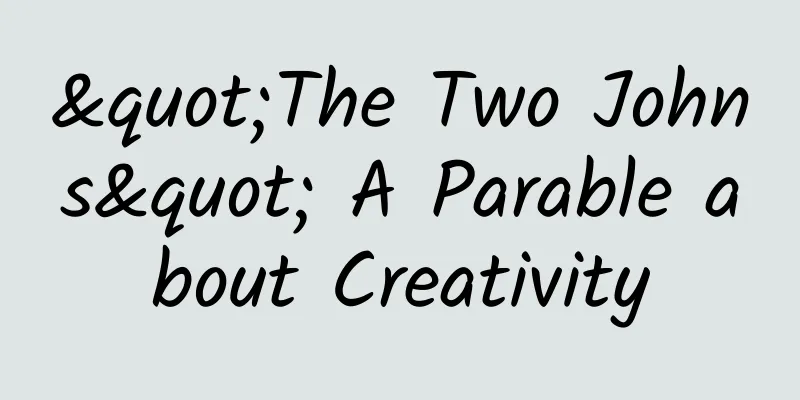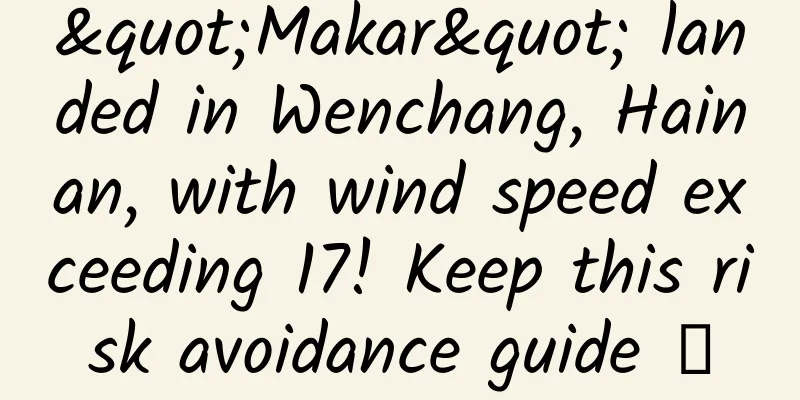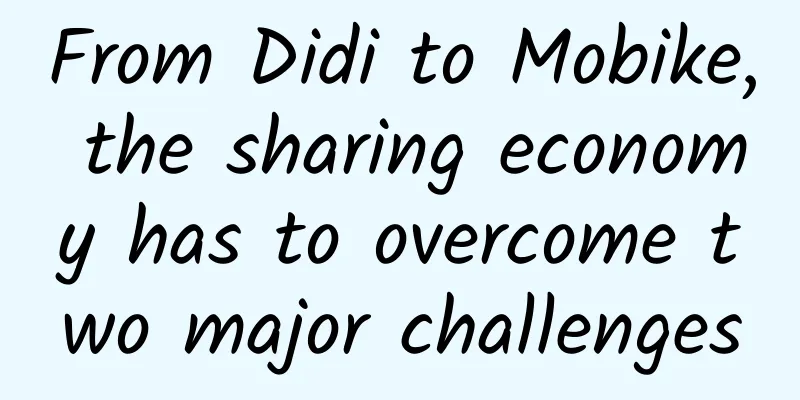"The Two Johns" A Parable about Creativity

|
If Elon Musk is the idol of all entrepreneurs, then John Carmack is the symbol of all technical people. Paypal, Tesla, and SpaceX are certainly not something that an ordinary entrepreneur can accomplish. Game engines, armadillo rockets, and virtual reality are obviously not something that an ordinary technical person can achieve. Although we have not yet started with the actual technology of Iron Man's "Mark II" power armor, the story of "Two Johns" can give us a glimpse of how the concept of the holodeck in "Star Trek" has gradually influenced our actual technology. Doom chronicles the entire process from the two Johns coming together to found id Software to their eventual separation. However, the book is not perfect. The story ends abruptly at the end of the book, but the plot continues to ferment. In fact, it was not until Carmack left id at the end of last year that the story really came to an end. Carmack himself talked a lot about the review and summary at the end of the book in the interview for the 20th anniversary of id Software. To explore this topic in depth, I am afraid that we have to wait until Carmack's authorized biography is completed in the future. The book quotes Dungeons & Dragons creator Gary Gygax, who describes the reality of the situation that creative people face:
For John Romero, the charm of such games is obvious. What excites him even more is that he can create such a world. And unlike arcade or home consoles, computers are not so high and mighty. They are already equipped with various tools and development systems, and the people who hold the keys are not those monopoly dignitaries, but people who love computers. They are like-minded partners. Starting in the summer of 1979, Romero went to the nearby community college Sierra College every week to study, play games, explore, and study with students... Computers are unprecedented tools for them. In this world, as long as a person works hard, he can definitely do what he wants. At that time, computers were still a world without so much coercion and surveillance. Growing from an ordinary teenager to a digital hero, all Romero did was to create omnipotently and create a new world without restrictions. He released his fantasies about comics and movies into a text-based adventure game, which was Romero's first game. In the subsequent independent production, he not only programmed, but also did art, and could even complete a game in half an hour. The passion for making games brought together several young people with completely different personalities at SoftDisk magazine: Carmack's calm concentration balanced Romero's unrestrained enthusiasm, and Adrian's weird and gloomy writing style was the opposite of Tom's cartoon comedy style. They had only one goal - to make games.
This is the image of the "two Johns" described by Tom Hall in the help manual of Wolfenstein 3D. At that time: Carmack was the technical leader, responsible for making a new engine; Tom was the main designer, responsible for conceiving the game plot and other aspects; Romero was just in between them, he could help Carmack write tools and discuss various ideas with Tom; Adrian Carmack put their ideas into pictures and added some blood from time to time. PC game technology breakthroughs started with smooth scrolling effects, to perspective 3D images and seamless 3D worlds, and then to true 3D engines; game works also developed from Commander Keen to Wolfenstein 3-D and Doom, and then to Quake. In their creative process, Romero's creativity pushed Carmack to become a better programmer, and at the same time, Carmack's technology pushed Romero to become a better designer. In order to make games, they also had close collaboration and mutual promotion. In terms of business, they boldly adopted the "shareware" distribution method and issued technology licenses. As an innovative company, the book describes a lot about the company's difficulties and the founders' separation, but the root of the problem is simply the personalities of the two founders. If we further compare the characteristics of several competitors at the time, we should be able to write more. At that time, the rising stars of PC games, Valve and Blizzard, were about to rise: Valve, which was founded in 1996, created a stage for employees to exert their creativity from the company's organizational structure, and "Half-Life" was released at the E3 exhibition in 1997; and Blizzard, which was founded almost at the same time as id Software, had gone through the first few years of running-in period. "Warcraft", "Diablo" and its Battle.net technology have put the company on the road of high-quality games, and "StarCraft" was released at the E3 exhibition in 1998; in the same year, Epic Games' Unreal game engine was officially unveiled, and it began to specialize in the field of game engine technology licensing. At this point, the combined force of id Software's external competitive forces has surpassed id, the leader in the PC gaming industry. Comparing id Software's own corporate structure and the way it develops games and engines, we find that Romero and Carmack, two creative and programming geniuses, failed to grow into outstanding leaders with the company. They wanted to make games, and they did; but at that time they did not make the company itself more suitable for making games, but other companies caught up and went further in this regard. It seems more logical to explain the subsequent failure of Ion Storm and John Carmack's final departure in this way, rather than just using a villain version of John Carmack to explain it. Therefore, at the end of the fable, they created an omnipotent virtual world, but ultimately failed to be omnipotent in the real world. It always takes time for the general public to accept new things. This includes not only adapting to new technologies and tools, such as 3D images, but also a series of ethical and even legal issues. For example, the Nazi elements in Wolfenstein 3D triggered the first legal dispute in cyberspace. The book devotes a lot of space to discussing the blood and violence in games. Senator Joseph Lieberman's hearing in 1993 and the Twenty-first Century Media Responsibility Act in 1999 represent the mainstream society's attitude towards new things - "recognize your role in social education." The term "electronic heroin" also originated from the controversial review of The Guardian shortly after the release of "Doom". The Padalka school shooting in 1997 and the Columbine massacre in 1999 pushed the game problem to the forefront of the mass media. But the truth of the matter is as Jon Katz, a writer for Rolling Stone magazine and the technology community website Slashdot, pointed out, "The root of the problem is where those teenagers get machine guns and bombs, not whether they go to a certain website or play a certain game." The final court ruling also reads, "In the face of these tragic tragedies, any rational analysis seems pale and powerless, and the court cannot seemingly fairly attribute the blame to something." In fact, Paul Graham pointed out the crux of this social phenomenon in his article "Things That Cannot Be Said" with the word "sanctimonious":
He also wrote, "But let's ask ourselves, are we instilling the Santa Claus myth in our children for their sake or for our sake?" Later stories At the end of the book, Romero's positioning of his new company Monkeystone is back to where it all started, "just good friends, good friends getting together to make games." He did just that, and later led game projects at Midway Games and Slipgate Ironworks. He is a prolific man, with more than 100 games in his portfolio. He also served as chairman of the board of CPL for a decade. Putting aside his past over-inflated ambitions, games have always been his greatest passion in life. After more than 10 years of rocket hacking, Carmack announced in August 2013 that Armadillo Aerospace had entered hibernation mode. At the same time, he joined Oculus VR as CTO and finally resigned from id at the end of November. At the end of March this year, when Facebook acquired Oculus VR for $2 billion, the most interesting comments on Hacker News were: "Carmack is definitely too heavy metal for google :)" "I can't believe Carmack is thrilled about being part of Facebook." Fortunately, Oculus VR still maintains independent operation. It's a fascinating story, and I think the real story is far more fascinating and instructive than what's in the book. I'm also looking forward to Carmack's authorized biography. As a winner of Toutiao's Qingyun Plan and Baijiahao's Bai+ Plan, the 2019 Baidu Digital Author of the Year, the Baijiahao's Most Popular Author in the Technology Field, the 2019 Sogou Technology and Culture Author, and the 2021 Baijiahao Quarterly Influential Creator, he has won many awards, including the 2013 Sohu Best Industry Media Person, the 2015 China New Media Entrepreneurship Competition Beijing Third Place, the 2015 Guangmang Experience Award, the 2015 China New Media Entrepreneurship Competition Finals Third Place, and the 2018 Baidu Dynamic Annual Powerful Celebrity. |
<<: A brief analysis of Hololens' "holographic" application scenarios
>>: The Heart of Craftsmanship
Recommend
Electric car value retention rate list: NIO ES6 and Tesla Model 3 exceed 70%
Recently, Roland Berger released the "2020 C...
Cultural and Natural Heritage Day丨Romantic life details of the ancients, full of ritual sense!
Today (June 11) is the Cultural and Natural Herit...
Community operation methodology: how to gather target users
In early 2015, communities began to become popula...
What is the push mechanism of Tik Tok? How does Tik Tok get traffic?
In today's Internet age, traffic is the most ...
What to do if you have a "double positive"? Authoritative answers
Recently, some people have tested positive for CO...
Introduction to 360 Fengwu advertising promotion styles!
Fengwu is a major innovation in the creative form...
Is Wenchang Tower really useful? Correctly understand the role of Wenchang Tower?
The function of Wenchang Tower is to promote chil...
WeChat Moments with more than nine photos can be turned into videos
On January 26, WeChat 8.0.18 for iOS was official...
Learn more! A collection of iOS trivia
CAGradientLayer The CAGradientLayer class is used...
WeChat for Business: A Practical Guide to Marketing Management
Introduction to the practical strategy resource o...
The color TV industry is actively exploring the O2O model and the market is expected to improve in the second half of the year
The sales data of major home appliances in the fi...
We have summarized ten changes for you to understand in iOS 10 beta 4
On the morning of August 2, Apple released the fo...
Ancient virus from 48,500 years ago has been revived! Scientists warn: It may pose a threat to humans
According to a report on the website of the Briti...
Night Hunters full version uncut HD Chinese subtitles
Ben Kingsley, Henry Cavill and Alexandra Daddario...
APP promotion: Forums are not a thing of the past, good promotion will definitely have a fan effect!
Forum promotion uses the forum as a medium. Forum...









